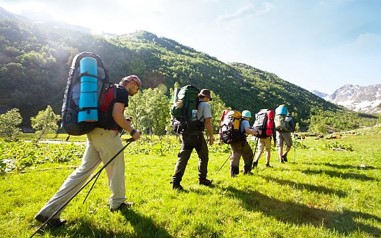Eco-Tourism Unlocked: Traveling Responsibly in a Sustainable World
In an era where global travel has become more accessible than ever, tourism brings both remarkable opportunities and significant challenges. Eco-tourism, or environmentally responsible travel, has emerged as a crucial paradigm for ensuring that exploration does not come at the expense of the planet. This essay explores the principles, strategies, and real-world applications of eco-tourism, providing practical guidance for travelers who wish to make a positive impact while enjoying the richness of diverse landscapes, cultures, and ecosystems.
Understanding Eco-Tourism: More Than Just Travel
At its core, eco-tourism is a philosophy of travel that prioritizes sustainability, environmental preservation, and cultural sensitivity. Unlike traditional tourism, which often prioritizes leisure and entertainment, eco-tourism emphasizes the awareness of environmental footprints and the importance of supporting local communities. Responsible travelers recognize that their actions—whether choosing accommodation, selecting transport, or engaging with local culture—can either contribute to or mitigate environmental harm.
Eco-tourism is not limited to remote rainforests or national parks; it extends to urban areas, small towns, and culturally rich regions. Even in cities, travelers can practice eco-conscious choices by patronizing local businesses, reducing energy consumption, and minimizing waste. The ethos of eco-tourism requires thoughtful planning, mindfulness, and a willingness to adapt personal habits for the benefit of the planet and the communities visited.
Choosing Sustainable Destinations
The first step in practicing responsible tourism is the careful selection of destinations. Some regions are particularly vulnerable to environmental degradation due to fragile ecosystems or over-tourism. For example, coral reefs, alpine regions, and tropical forests face immense pressure from large-scale tourism. Visiting these areas without preparation can lead to unintended consequences such as habitat destruction, pollution, and cultural erosion.
When choosing a destination, travelers should prioritize locations that actively promote sustainability. Protected areas, eco-resorts, and communities involved in conservation projects are excellent examples. Certifications such as the Global Sustainable Tourism Council (GSTC) provide reliable indicators of a destination’s commitment to eco-friendly practices. Furthermore, small-scale, off-the-beaten-path destinations often offer immersive experiences while limiting the strain on local resources.
| Factor | Eco-Friendly Option | Conventional Option | Impact |
|---|---|---|---|
| Accommodation | Certified eco-lodges, local homestays | Large hotel chains | Energy/water savings, local economic support |
| Transport | Public transit, biking, electric vehicles | Rental cars, taxis | Reduced carbon footprint |
| Activities | Guided nature walks, volunteering programs | Motorized tours, mass attractions | Minimal ecological disturbance |
| Food & Beverage | Locally sourced, organic cuisine | Imported, industrial food chains | Lower carbon footprint, supports local farmers |
| Waste Management | Reusable containers, composting facilities | Single-use plastics, limited recycling | Reduced landfill and pollution |
Travel Modes That Minimize Environmental Impact
Transportation remains one of the largest contributors to the carbon footprint of tourism. Air travel, while often unavoidable, is a high-emission activity. Responsible travelers can offset these emissions through carbon offset programs, which fund renewable energy projects, reforestation, and sustainable infrastructure.
Whenever possible, low-impact travel modes are preferable. Trains, buses, and electric vehicles produce significantly fewer emissions per passenger kilometer than planes or conventional cars. Cycling and walking, while not always practical for long distances, allow travelers to intimately experience the environment and culture, while leaving virtually no environmental trace.
Eco-conscious travel also involves making informed choices about local transportation. Many cities offer public transit passes, bike-sharing systems, and pedestrian-friendly routes that reduce reliance on private vehicles. By embracing these options, travelers contribute to lower traffic congestion, cleaner air, and reduced noise pollution.
Supporting Local Communities and Culture
Eco-tourism is deeply intertwined with social responsibility. Responsible travelers seek to understand the local culture, support small businesses, and contribute positively to the community’s well-being. This approach ensures that tourism becomes a mutually beneficial exchange rather than a one-sided extraction of resources.
Patronizing locally owned accommodations, restaurants, and craft markets not only strengthens the regional economy but also preserves cultural heritage. Participating in community-led tours, workshops, or volunteering initiatives provides meaningful interactions that foster understanding and respect.
Cultural sensitivity also involves ethical engagement with local traditions. Travelers should seek permission before photographing sacred sites or ceremonies, avoid behaviors that disrespect local norms, and educate themselves on the history and values of the community. By doing so, they reduce cultural disruption while enriching their personal travel experience.
Practical Tips for a Responsible Traveler
-
Pack Smart and Light: Reduce luggage to essentials to decrease transportation energy usage. Reusable water bottles, eco-friendly toiletries, and minimal packaging are key.
-
Choose Certified Accommodations: Look for lodges or hotels with green certifications and responsible waste management practices.
-
Offset Your Carbon Footprint: Contribute to carbon offset programs for unavoidable flights or long-distance travel.
-
Engage Locally: Eat local food, buy handmade crafts, and participate in cultural experiences led by residents.
-
Leave No Trace: Stick to marked trails, dispose of waste properly, and respect natural habitats.
Case Studies: Eco-Tourism in Action
-
Costa Rica: Often cited as a global model, Costa Rica integrates national parks, wildlife protection, and eco-lodges. Tourists engage in guided tours that fund conservation while supporting local communities.
-
Bhutan: The “high-value, low-impact” tourism policy ensures limited visitor numbers, sustainable lodging, and immersion in local culture.
-
New Zealand: Eco-certified tours and accommodations, combined with strict conservation regulations, have established the country as a leader in sustainable tourism.
-
Iceland: Tourism authorities promote environmental awareness and responsible hiking, ensuring visitors respect fragile landscapes.
Measuring Your Travel Impact
Quantifying the ecological impact of travel is a growing trend. Apps and online calculators allow tourists to estimate carbon emissions, water usage, and energy consumption. Travelers can then take corrective measures, such as reducing flights, choosing renewable energy-powered accommodations, or contributing to reforestation initiatives.
| Type of Impact | How to Measure | Mitigation Strategies |
|---|---|---|
| Carbon Footprint | Online calculators, travel emission apps | Public transport, carbon offsets |
| Water Usage | Water meter readings at lodges, self-monitoring | Shorter showers, reusing towels |
| Energy Consumption | Check electricity sources at accommodations | Opt for renewable-powered lodges |
| Waste Generation | Track disposable items, local recycling options | Reusable containers, recycling, composting |
| Cultural Disruption | Feedback from community programs | Participate ethically, learn local customs |
The Future of Eco-Tourism
The evolution of eco-tourism is closely linked to innovation, policy, and social awareness. Emerging technologies—such as virtual reality travel experiences and AI-based environmental tracking—are reshaping how travelers interact with destinations without leaving a significant footprint.
Governments and NGOs increasingly incentivize sustainable tourism through grants, certifications, and educational campaigns. As younger generations of travelers prioritize environmental responsibility, businesses are adapting, offering eco-friendly packages, carbon-neutral accommodations, and immersive cultural experiences.
Ultimately, eco-tourism is not a rigid formula but a mindset. Every decision, from the airline chosen to the souvenirs purchased, contributes to the collective goal of preserving the planet for future generations.
Conclusion
Eco-tourism represents a transformative approach to travel, merging adventure, cultural enrichment, and environmental stewardship. By carefully selecting destinations, minimizing ecological footprints, supporting local communities, and engaging mindfully, travelers can enjoy meaningful experiences while preserving the planet’s resources and heritage. The path to responsible tourism is not always perfect, but each conscious choice creates a ripple effect, demonstrating that exploration and sustainability can coexist harmoniously. As global awareness grows and technologies evolve, eco-tourism is poised to become the standard for all forms of travel—a way to journey responsibly, connect deeply, and leave the world a little better than we found it.




